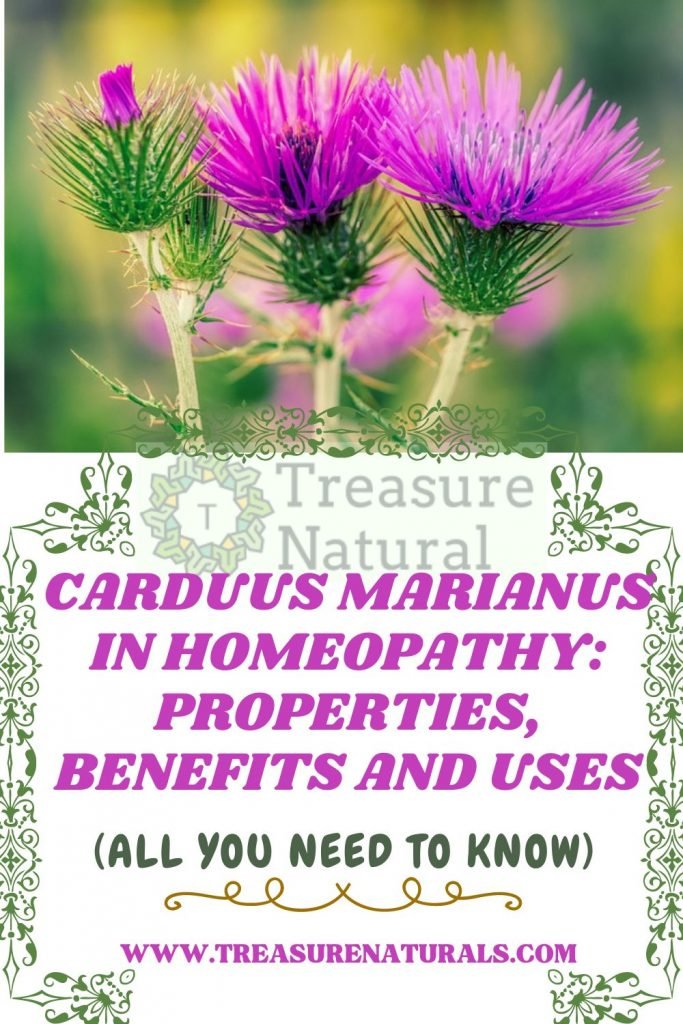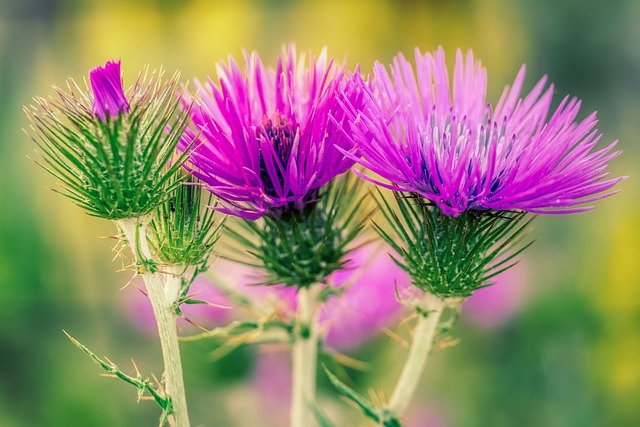
In the case of recurring gall and liver problems with nausea, a feeling of fullness and loss of appetite as well as gallbladder colic, constipation and pain in the upper abdomen, Carduus marianus can provide gentle help alongside conventional therapy.
The milk thistle, Carduus marianus, is a medicinal plant that has been known and proven for thousands of years in alternative medicine, but also in conventional medicine. The purple flowering thistle belongs to the daisy family and grows primarily in southern Europe, Asia Minor, North Africa and North America.
Carduus marianus is valued primarily for its detoxifying and strengthening effects on the liver and gallbladder. The plant owes its liver-strengthening properties to the active ingredient complex silymarin, which is particularly found in the fruits and seeds of the thistle. Silymarin has been proven to protect the liver cells from toxins and also stimulates the formation of new liver cells.
Carduus marianus: Homeopathic liver and bile remedy
Carduus marianus is also used in homeopathy to support the treatment of liver and gallbladder problems and is considered one of the most important liver remedies. The mother tincture is obtained from the fruits and seeds of the plant and then potentized accordingly. Typical areas of application for the concomitant use of Carduus marianus are liver diseases such as fatty liver, liver inflammation, liver poisoning, liver cirrhosis, jaundice and digestive problems as well as diseases of the gallbladder.
Liver and gallbladder diseases are very serious diseases that should never be treated yourself, but should always be medically clarified and professionally treated. However, homeopathic treatment can support conventional therapy in a meaningful way and accompany it effectively in order to accelerate the recovery process.
Carduus marianus 4X, 6X and 12X: Typical potencies and their dosage
For self-treatment with Carduus marianus, the very low-dose potencies 4X, 6X and 12X are primarily recommended. It can be taken in the form of homeopathic tablets, drops or globules. Carduus marianus is available as a single agent or complex agent with other active ingredients.
- Adults take either five globules, five drops or one tablet three times a day.
- Children each get three globules, three drops dissolved in water or half a tablet.
- Small children each receive two globules, infants each receive a globule pushed into the cheek pouch. In principle, a corresponding number of drops of the homeopathic solution or tablet portions dissolved in water can also be administered.
If the symptoms improve, the number of doses can be reduced to two or once a day. Once the symptoms have disappeared, treatment should be stopped.
In particularly protracted and stubborn cases, the administration of higher potencies, such as Carduus marianus 30c or higher, can also be useful. However, when high potencies are administered, self-treatment should no longer be carried out, but the therapy should be accompanied by a doctor or homeopath with homeopathic experience.
Key symptoms for the use of Carduus marianus
In order to find out which medicine works best for which clinical picture, the specific key symptoms – i.e. the main complaints observed – are always decisive in homeopathy. Each drug has its own range of symptoms that is typical. The more and more pronounced the main symptoms of a homeopathic medicinal product are observed in the patient, the more suitable the chosen remedy is. The following main symptoms speak for the concomitant treatment with Carduus marianus in addition to conventional medical treatment:
- jaundice (icterus)
- gallstone disease
- biliary colic
- Vomiting green-yellow mucus
- stomach pain
- loss of appetite
- nausea
- liver pain
- liver swelling
- stomach pain
- Pain in right upper abdomen
- constipation and diarrhea
- bloated stomach
Other measures to improve symptoms
- Ensure calm
- Loungers to relax
- Warm envelopes
- Avoid alcohol and high-fat foods
Carduus marianus: Means with a similar effect

Different homeopathic medicines can cover similar effective areas. In order to find the most suitable medicine in each case, it makes sense to know the homeopathic medicines that are used for similar symptoms. For Carduus marianus the following homeopathic medicines are:
- Picorhiza: The homeopathic medicine from the katuka plant is also recommended as an adjunctive therapy for liver dysfunction, especially if this occurs as a result of a viral infection or chemotherapy. Unlike Carduus marianus, however, dry, cracked skin rashes and itchy skin typically also occur.
- Taraxum: Taraxum can also provide relief for liver and gallbladder problems. Unlike Carduus marianus, the dandelion is also effective against complaints in the gastrointestinal tract. The patchy coloring of the tongue with reddish and whitish areas is particularly typical of Taraxum.
- Lycopodium clavatum: Clubmoss also has a positive effect on the liver, gallbladder, kidneys and bladder. It is mainly used against complaints of the digestive and urogenital tract and alleviates fear of failure. A feeling of fullness and strong flatulence are much more prominent here than with Carduus marianus.






